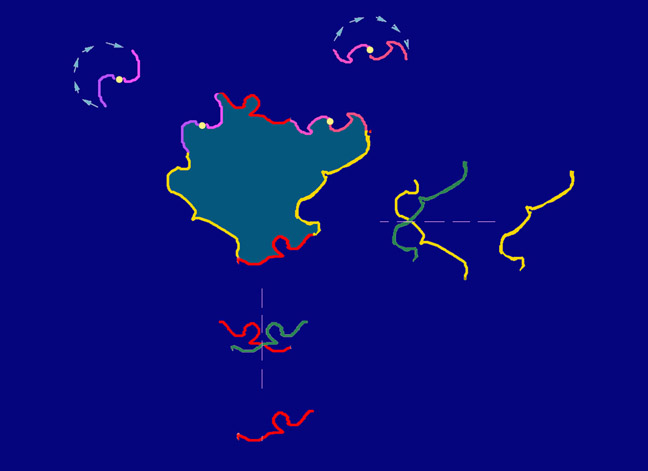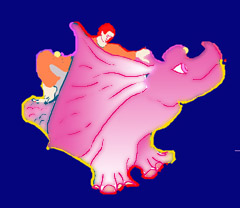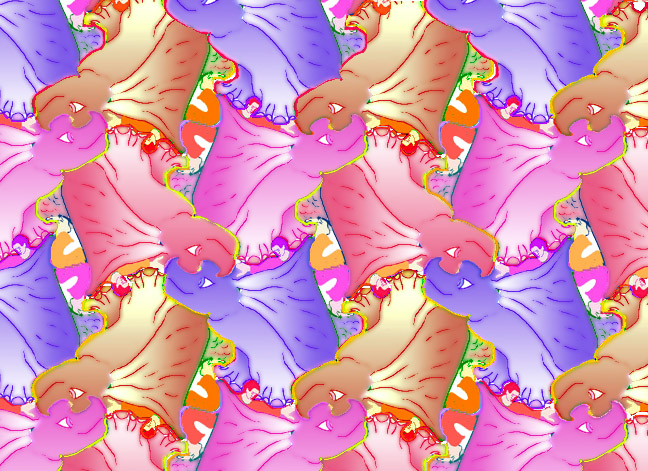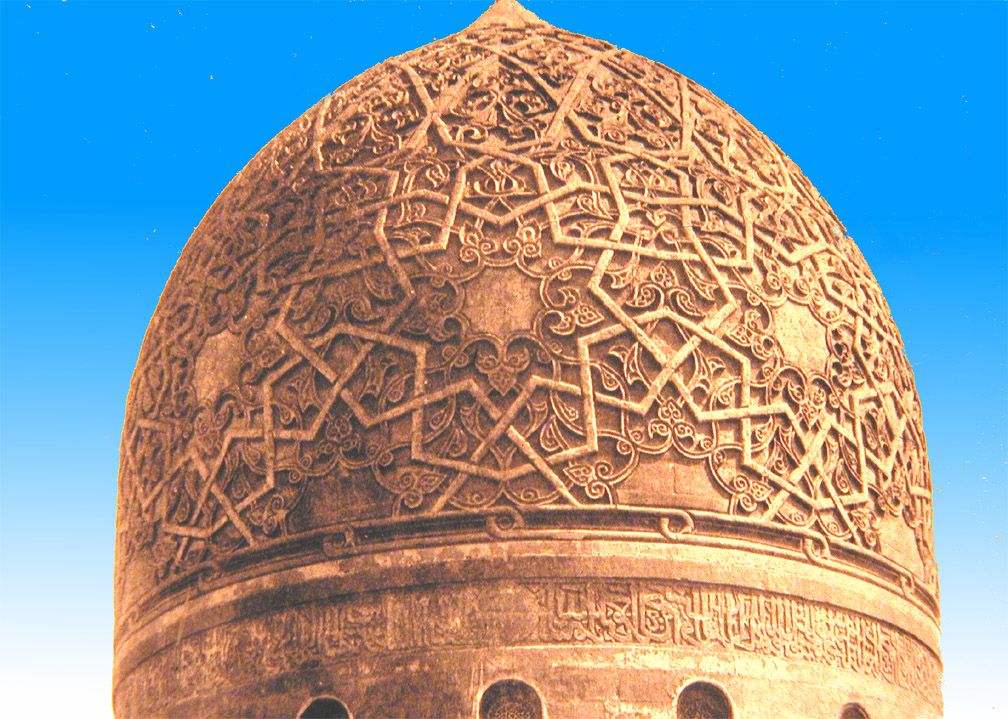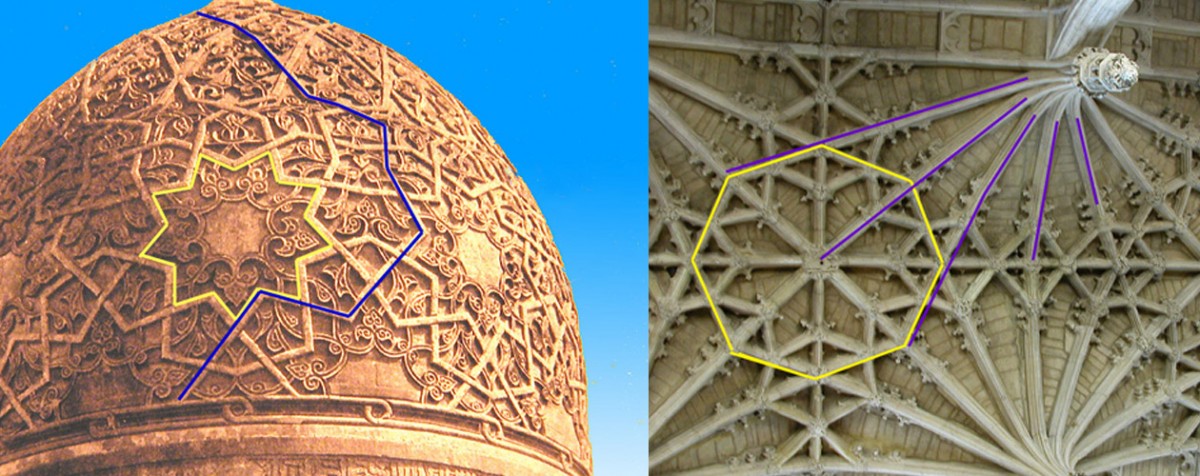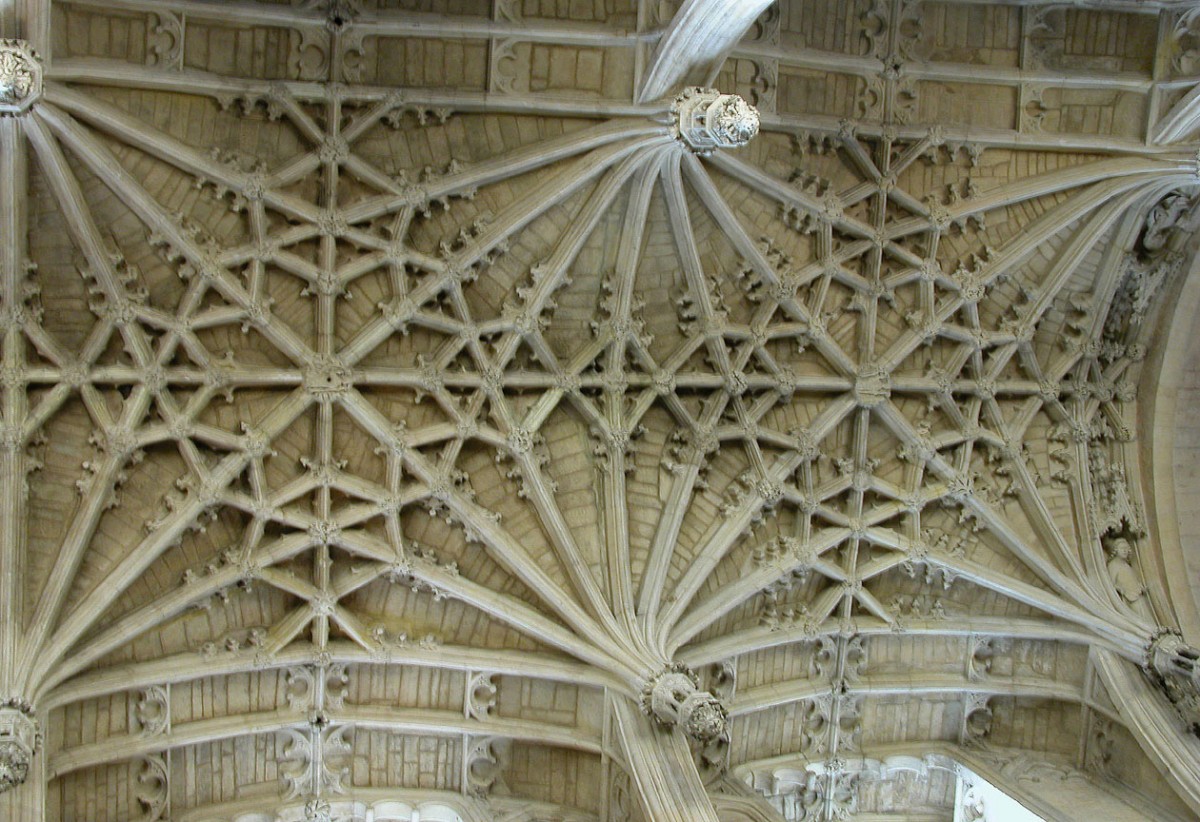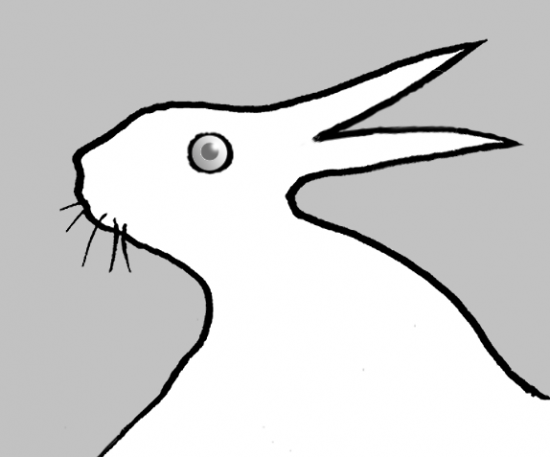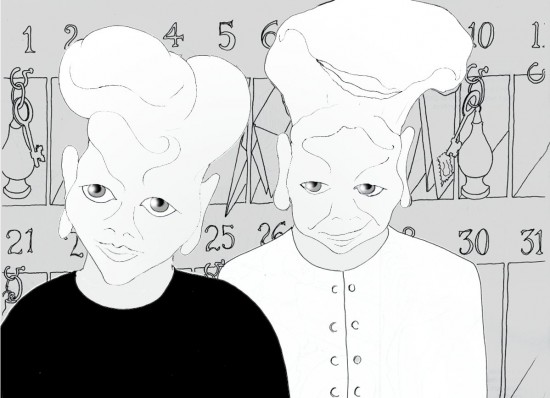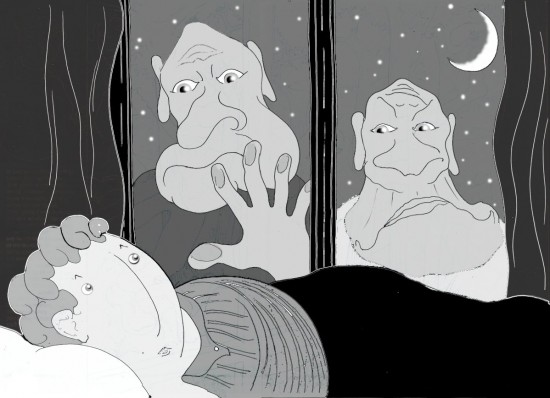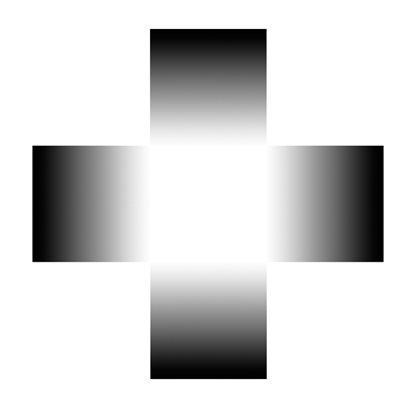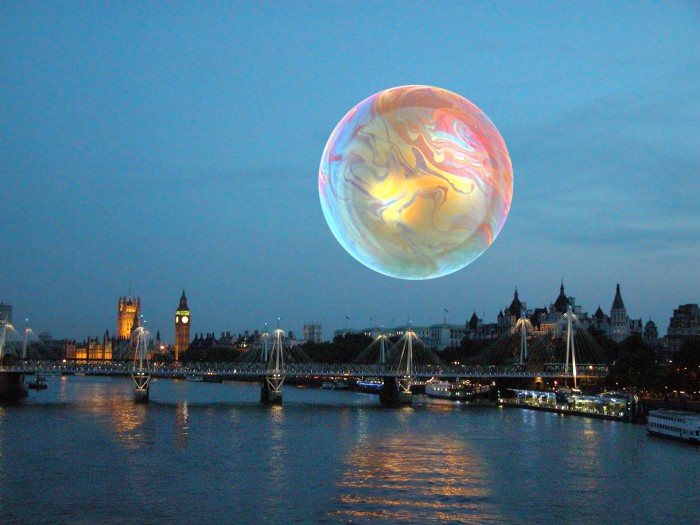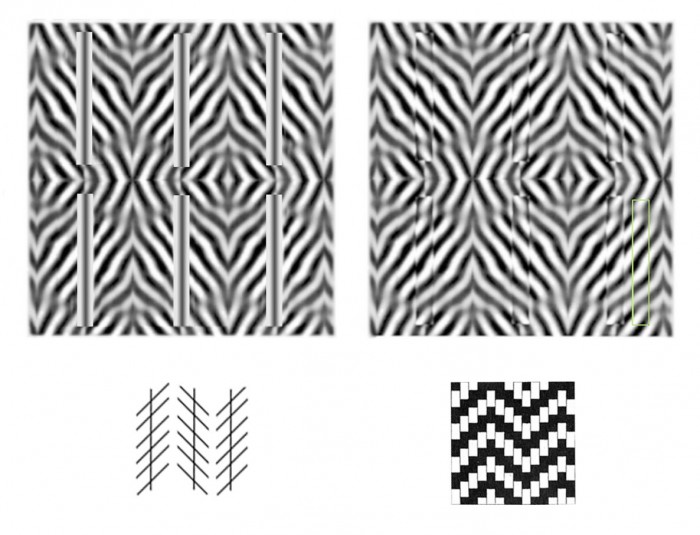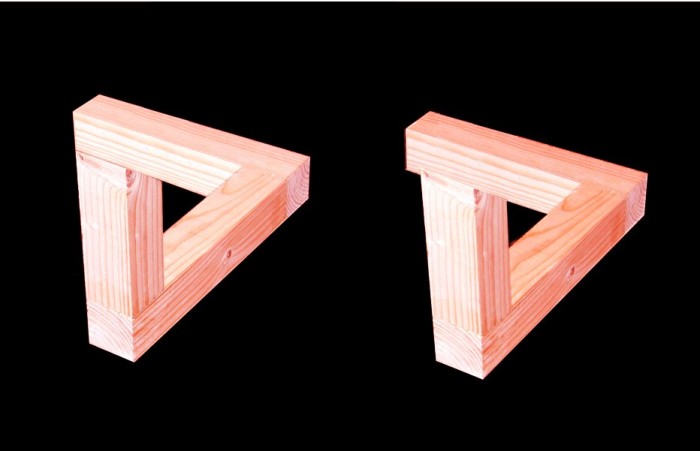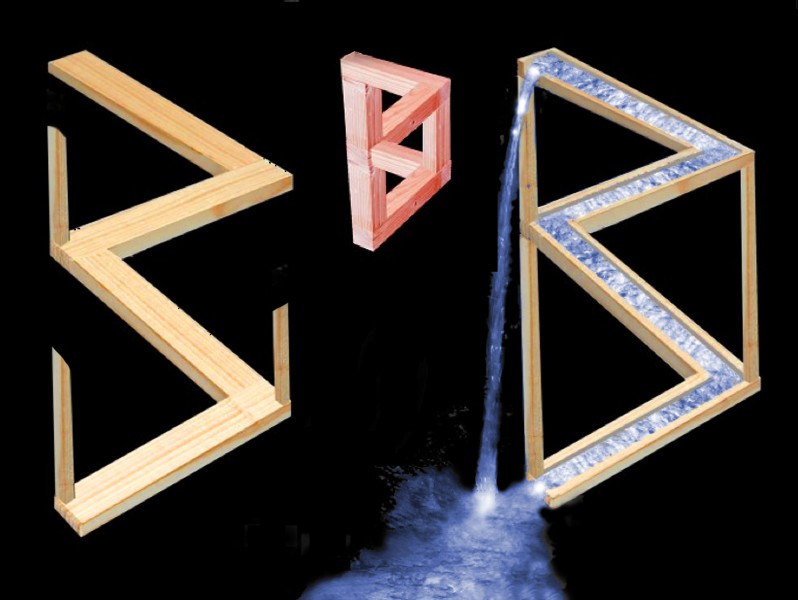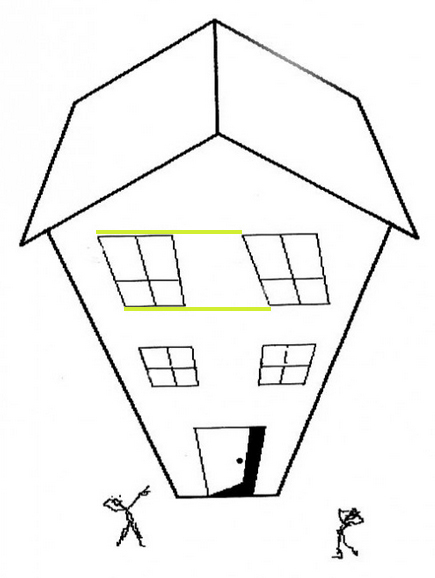A tessellation is a pattern made up of elements that repeat with no gaps and no overlaps. The elements may be abstract shapes, or may be recognisable objects or creatures, like the ones in the tessellations of M.C.Escher. When I begun playing around with tessellations, I thought understanding the procedures needed to make patterns that tessellate would be the hard part. I thought it would be fairly easy to find creatures in whatever shapes I ended up with. Not so. The procedures aren’t so hard. But fitting creatures into them I found really difficult. Here’s one of my first attempts. I started with one of the most complicated recipes for a tessellation.
For the details of the procedures, which give shapes that tessellate, see my tessellation tutorial. Essentially, the boundary of every shape that will tessellate is made up of pairs of lines. Within each pair, an identical line repeats, either by rotation, reflection, or just by shifting over. In the example above, there are four pairs of lines, two of them with rotations and two with reflections.
But what creature could I discover in this shape? Here’s what I came up with, a cross between an elephant and a rhino, with a little man on its back.
And it does tessellate! It gives a pattern in which the elenoceros repeats four times, right way up facing both ways, and then upside down facing both ways.
